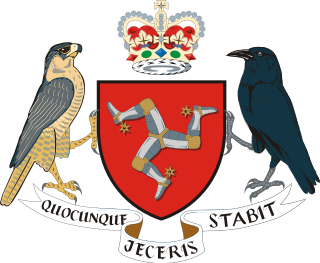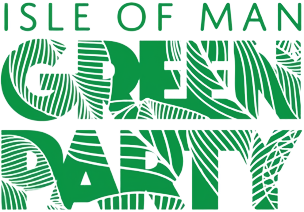Natural Gas
Exploration
In 1982 BP Petroleum Development Limited drilled an exploration well in UK offshore Block 112/25 targeting Triassic sandstones as a possible outlier of the Morecambe Bay gas field. This proved to be water saturated, yet deeper Permian sandstones appeared to be more productive. [7] However, the field was isolated from any infrastructure to produce or export the gas. BP therefore relinquished the license. Block 112/25 was then in UK waters, but now lies within the Isle of Man 12-mile territorial limit. [8] In 2014 Crogga Limited was founded and in 2017 was awarded a production license. Appraisal work and seismic surveys are being undertaken. In 2022 Crogga Limited appointed disgraced oil executive Richard Hubbard as the company's new CEO. [9]
Import
In 2002 a second gas interconnector pipeline from Scotland to Ireland was constructed by Gas Networks Ireland. [4] The first UK to Ireland interconnector was commissioned in 1993. The pipeline passes within 12 km of the Isle of Man. The opportunity was taken to provide a spur line from the interconnector pipeline to the Isle of Man. This allowed natural gas to be imported for the first time. It also provided a potential export route for gas should the appraisal work be successful and a gas processing facility built.
The import of natural gas from the interconnector, in GWh, is shown on the graph. [10]
Graphs are unavailable due to technical issues. There is more info on Phabricator and on MediaWiki.org. |

Distribution
In preparation for the arrival of natural gas from the interconnector a gas transmission and distribution network was constructed. The system was designed, built and commissioned by Bord Gas Eireann in compliance with the requirements of the Manx Electricity Authority. [6] In Douglas 15,000 customers were converted from LPG to natural gas. [11] A schematic of the system is shown on the right. The network comprises buried steel and polyethene pipes, four Above Ground Installations (AGI) that reduce the pressure of the gas, and eight District Regulating Installations (DRI) that further reduce the pressure and which supply local distribution systems to gas users. The Manx Utilities Authority buys and delivers gas to the distribution network where it is purchased by Manx Gas. [6]
Operation
Gas arrives on the island via a 10-inch pipeline operating at up to 146 bar. Glen Mooar 1 AGI measures the flow rate of the gas and reduces the pressure to 90 bar. Gas is transported across the island in a 10-inch steel pipeline to Pulrose AGI where the pressure is reduced to 32 bar for use in the Combined Cycle Gas Turbine (CCGT) in Pulrose power station. Three AGIs take gas from the 10-inch line and reduce the pressure to 4 bar. The gas is routed to the eight DRIs where the pressure is reduced further to not exceeding 2 bar for local distribution. Glen Mooar1 AGI is owned by Gas Networks Ireland but is operated by the Manx Utilities Authority (MUA). The MUA owns the cross-country pipeline, the AGIs, the 4 bar pipelines, and the DRIs. Manx Gas owns, and is responsible for the operation of, the 2 bar distribution networks from the outlet valve of the DRIs. [4]
Key data on gas supply is summarised in the table: [12]
| Year | 2014/5 | 2015/6 | 2016/7 | 2017/8 | 2018/9 | 2019/20 | 2020/1 |
|---|---|---|---|---|---|---|---|
| Gas delivered to Manx Gas, therms | 10 | 10 | 11 | 11 | 10 | 10.9 | 10 |
| Gas used for electricity generation, therms | 34 | 30 | 35 | 34 | 34 | 40.8 | 39.5 |












